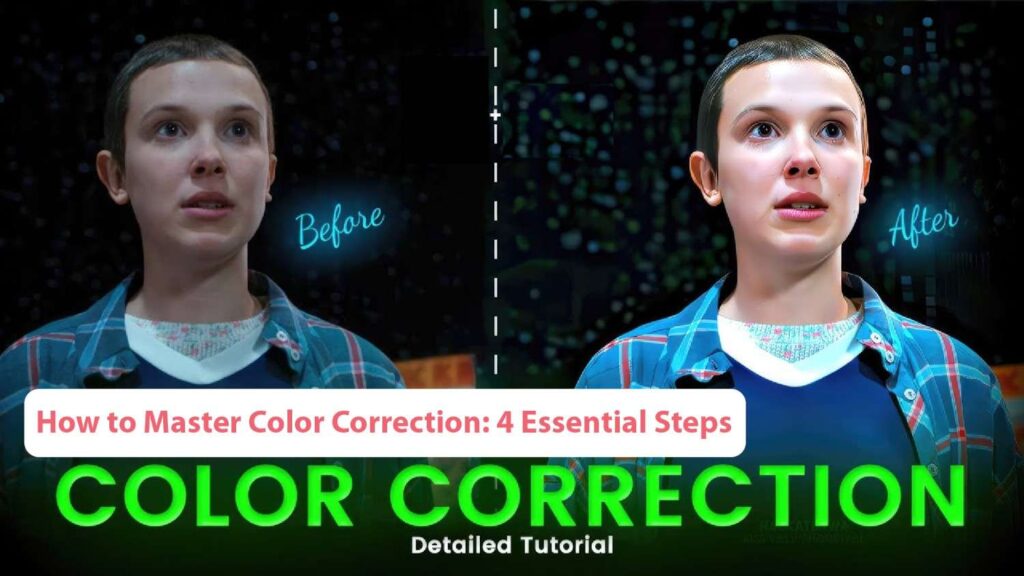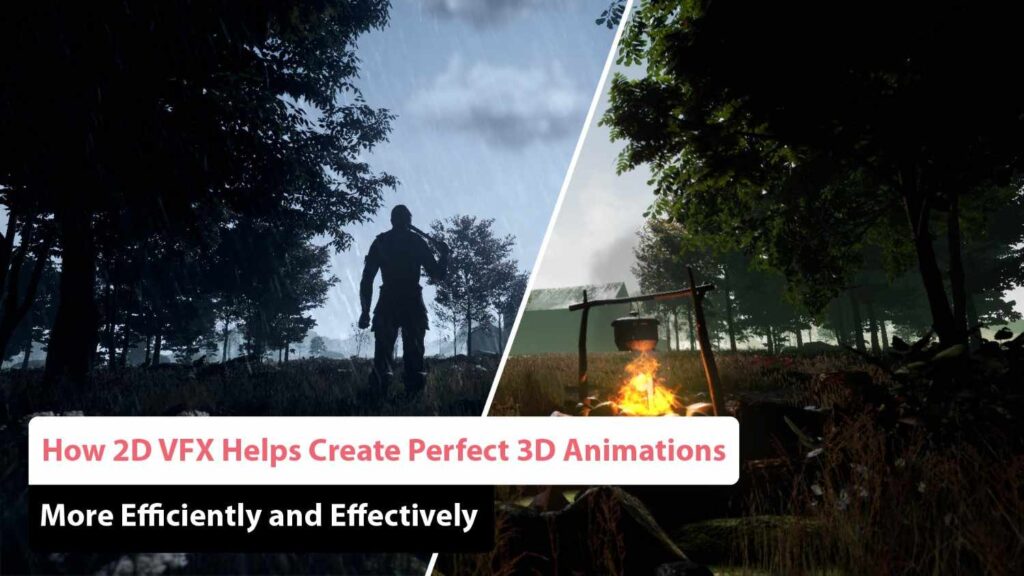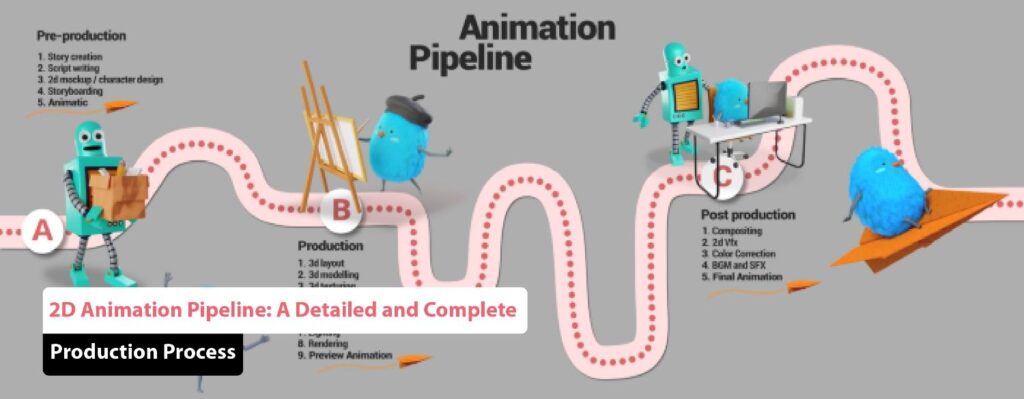How to Master Color Correction: 4 Essential Steps
Color correction is a crucial element in the post-production phase of animation, involving the meticulous adjustment of colors in each scene to enhance the visual impact and align with the animation’s color script and overall vision. This process ensures that the final animation is visually cohesive and effectively communicates the intended mood and atmosphere, creating a compelling visual narrative. In this article, we’ll delve into the essential stages of color correction within the animation workflow. From pre-production through to the final output, we’ll explore the various tasks involved, and the tools utilized for color correction, and share insights and tips from industry-leading colorists. You’ll gain a comprehensive understanding of how color correction transforms an animation, making it not just a visual experience but a storytelling tool that engages and captivates the audience. Additionally, we’ll highlight common challenges and best practices to help you achieve professional-grade results. Expert Techniques for Color Correction? Let’s begin with the fundamentals of color correction, a crucial step in the post-production process of animation. This task is typically carried out by a colorist, who collaborates closely with the Director of Photography (DP) and the creative team to achieve the desired visual outcome. The colorist’s primary goal is to meticulously adjust the colors of each frame, focusing on three core components of any image: hue, saturation, and brightness. This careful manipulation ensures that every frame contributes to the overall visual impact and narrative cohesion of the animation. The color correction process generally involves several key tasks, performed in a specific sequence to achieve optimal results: While color correction is traditionally considered a post-production stage in the 3D animation pipeline, it is guided by a color map established during pre-production. This color map, often referred to as the color script, outlines the color choices and transitions that align with the animation’s creative vision. In the following sections, we will explore how the color script serves as a foundational tool, influencing every step of the color correction process and ensuring that the final animation aligns with the intended artistic direction. By understanding these principles, you will gain a deeper appreciation of how color correction enhances the storytelling and visual impact of animation within the 3D animation pipeline. Color Script: Each color carries its weight, meaning, and psychological impact on viewers, whether they are consciously aware of it or not. A color script is a crucial pre-production element, typically developed by the director or cinematographer with a profound understanding of color theory. This document provides a comprehensive guide to the color choices and their intended effects throughout the animation. A color script details the specific color mapping, styles, and palettes assigned to each scene and sequence within an animation. Much like a storyboard service, it serves as a technical guide, offering color direction before production begins. This allows the creative team to visualize and plan the overall color scheme and ensure consistency across all scenes. Creating a color script is a highly experimental process. The final document will encompass shot references, color palettes, color temperature, tone, contrast, and guidance on transitions. This detailed approach ensures that the color scheme not only aligns with the animation’s narrative but also enhances the viewer’s emotional experience, providing a cohesive and immersive visual journey. Key Tools and Techniques for Advanced Color Correction Discover the essential tools and techniques that create color correction from basic adjustments to advanced mastery. This guide delves into the cutting-edge software, hardware, and methods used by professionals to achieve precise color grading, ensuring your visuals are vivid, accurate, and impactful. Whether you’re refining film footage or enhancing digital images, mastering these advanced color correction strategies will help you achieve stunning, polished results. 1. Scopes: Video scopes, such as waveform monitors, vectorscopes, and RGB parade scopes, are indispensable tools for color correction. Waveform monitors display the luminance values of an image, showing the amount of light per unit area, which helps colorists adjust exposure and contrast effectively. By ensuring accurate luminance levels, these scopes contribute to a well-balanced image. Vectorscopes provide a visual representation of color saturation levels, enabling precise adjustments to hue and saturation to achieve the desired color values. RGB parade scopes offer a breakdown of the red, green, and blue color channels separately, allowing for targeted adjustments to lift, gamma, and gain for fine-tuning color and tonal aspects. These tools collectively ensure that each color channel is correctly balanced and harmonized. 2. Color Wheel: Color wheels are essential for both primary and secondary color corrections. Primary color wheels control shadows, mid-tones, and highlights, facilitating broad color adjustments across the entire image. Built-in preview monitors show real-time changes as the colorist adjusts each range, allowing for immediate feedback and refinement. Secondary color wheels offer the ability to isolate and adjust specific color ranges selectively. For instance, a colorist might use secondary controls to modify only the greens in an image, providing a high degree of flexibility during color grading. This targeted approach allows for nuanced color corrections that enhance the overall visual impact. 3. Masking: Masking techniques allow for precise color correction by isolating specific areas of an image. Colorists can apply adjustments to color, exposure, and brightness within the masked regions only. Tracking masks follow moving objects, enabling dynamic color corrections that adjust as the scene progresses. This functionality is essential for maintaining consistency and accuracy in animated sequences. 4. Color Lookup Tables (LUTs): A LUT (Lookup Table) is a preset file that applies a color transformation to footage, akin to a color filter. LUTs modify the pixel values in the original shots, applying predefined color adjustments to achieve a particular look or style. They streamline the color grading process by providing a quick way to apply complex color effects. There are two primary uses for LUTs. Creative LUTs offer a quick way to impart a specific aesthetic or visual tone to your footage, such as cinematic, vintage, or fantasy styles. Applying a creative LUT can instantly give your footage a distinctive appearance, simulating the look of



